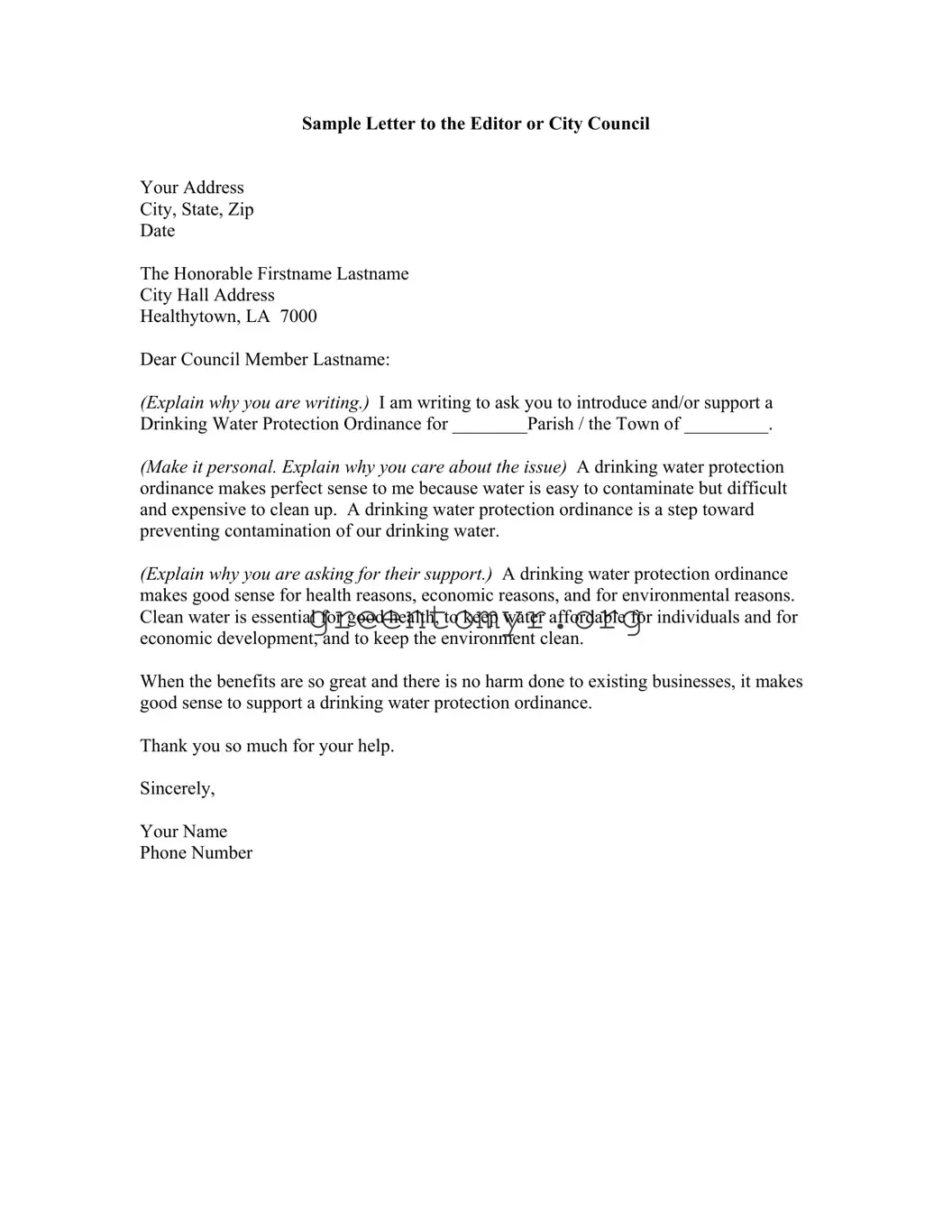Sample Letter to the Editor or City Council
Your Address
City, State, Zip
Date
The Honorable Firstname Lastname
City Hall Address
Healthytown, LA 7000
Dear Council Member Lastname:
(Explain why you are writing.) I am writing to ask you to introduce and/or support a Drinking Water Protection Ordinance for ________Parish / the Town of _________.
(Make it personal. Explain why you care about the issue) A drinking water protection ordinance makes perfect sense to me because water is easy to contaminate but difficult and expensive to clean up. A drinking water protection ordinance is a step toward preventing contamination of our drinking water.
(Explain why you are asking for their support.) A drinking water protection ordinance makes good sense for health reasons, economic reasons, and for environmental reasons. Clean water is essential for good health, to keep water affordable for individuals and for economic development, and to keep the environment clean.
When the benefits are so great and there is no harm done to existing businesses, it makes good sense to support a drinking water protection ordinance.
Thank you so much for your help.
Sincerely,
Your Name
Phone Number
